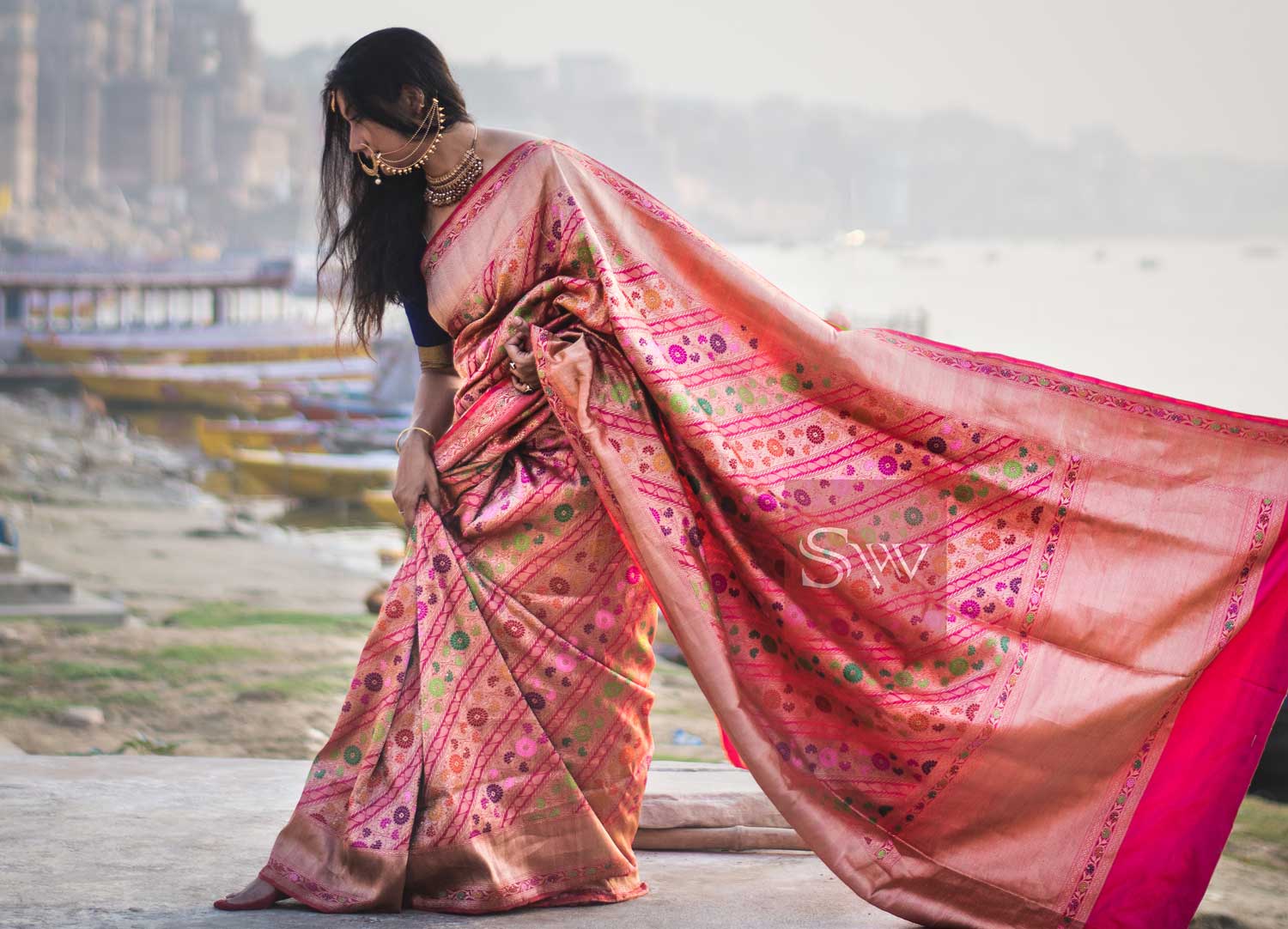Banarasi silk sarees are among India’s most cherished traditional sarees, celebrated for their intricate designs and luxurious fabric. Originating from Varanasi, these sarees carry a rich cultural heritage and are often worn on special occasions like weddings and festivals. However, the market is flooded with imitations, making it essential for buyers to be well-informed. To ensure you’re investing in an authentic Banarasi silk saree, consider the following key features and tips that will guide you through the identification process.
1. Authenticity Labels
Look for a Label
A genuine Banarasi saree typically has an authenticity label attached. This label is crucial for confirming the saree’s origin and artisanship. It often includes a unique serial number and the weaver’s name, along with specific features like holograms to deter counterfeiting. This level of detail reflects the weaver’s commitment to quality and transparency. As a buyer, it’s vital to check this label carefully; if it’s missing or looks suspicious, it could be a sign that the saree is not genuine.
Geographical Indication (GI) Tag
Another critical indicator of authenticity is the Geographical Indication (GI) tag. This government-certified mark signifies that the saree is an original Banarasi product, crafted using traditional methods passed down through generations. The GI tag not only protects the artisan’s work but also contributes to preserving the cultural heritage associated with Banarasi sarees. When you see a GI tag, you can be assured that you are purchasing a product that meets specific standards of quality and authenticity.
2. Weaving Techniques
Handwoven Characteristics
Authentic Banarasi sarees are primarily handwoven, a process that imbues each piece with unique characteristics. One of the hallmarks of handwoven sarees is the presence of slight asymmetries or imperfections in the design—these variations showcase the artistry involved in their creation. Look for pin markings on the hem, which indicate that the saree was woven on a traditional loom. This small detail is a testament to the care and precision of the weaver.
Examine the Reverse Side
Another effective way to check authenticity is by examining the back of the saree. In genuine sarees, you will find visible floats in the warp-and-weft grids, indicative of the fabric’s handwoven nature. On the other hand, machine-made sarees often appear smooth and uniform, lacking the distinctive texture that characterizes handwoven textiles. Taking a moment to inspect the reverse side can reveal much about the saree’s quality and authenticity.
3. Fabric Quality
Silk Texture
When it comes to the fabric quality, authentic Banarasi silk should feel smooth and supple, with a luxurious drape that falls gracefully. A simple yet effective test is to gently move the saree; it should produce a crisp rustling sound, which signifies the richness and quality of the silk. The texture should feel plush against your skin, a key indicator of the fine silk used in its creation.
Weight Consideration
Authentic sarees are heavier than their counterfeit counterparts, primarily due to the high-quality silk used and the intricate designs involved. When handling the saree, ensure that its weight feels appropriate for its size. A lighter saree may indicate inferior materials or construction techniques. The weight should feel substantial, giving a sense of durability that reflects the artisanship involved.
4. Pattern Details
Intricate Designs
The designs on an authentic Banarasi saree are typically complex and well-defined, free from smudging or imperfections. These motifs often draw inspiration from Mughal and Persian art, showcasing rich cultural narratives and aesthetic values. Look closely to ensure that the patterns are consistent on both sides of the saree; this symmetry is a hallmark of skilled artisanship. An authentic Banarasi saree tells a story through its intricate designs, making each piece unique.
Gold and Silver Threads
A hallmark of authentic Banarasi sarees is the use of Zari work, which involves incorporating gold or silver threads into the designs. This luxurious embellishment not only enhances the saree’s beauty but also adds depth and dimension to the overall look. When inspecting a saree, pay attention to the Zari work; it should be intricate and well-executed, reflecting the quality of artisanship. The shine and texture of the threads can also provide clues about authenticity—authentic Zari should have a lustrous appearance and feel substantial against the fabric.
5. Price Point
Cost Consideration
Finally, the price of a Banarasi saree is a key factor to consider. Due to the extensive artisanship, high-quality materials, and traditional weaving methods involved in their creation, genuine Banarasi sarees are often on the higher end of the price spectrum. While opting for a more affordable option is tempting, be wary of sarees priced significantly lower than others. If the deal seems too good to be true, it probably is counterfeit sarees often compromise on quality and authenticity.
Conclusion
By keeping these guidelines in mind, you can confidently assess the authenticity of a Banarasi silk saree before making a purchase. Investing in a genuine piece not only enhances your wardrobe but also supports the rich tradition of Indian weaving. When shopping for a saree, always prioritize authenticity, as it adds value not just to your collection but also to the artisans and communities that have preserved this beautiful craft. A genuine Banarasi saree is an investment in tradition, quality, and culture.

